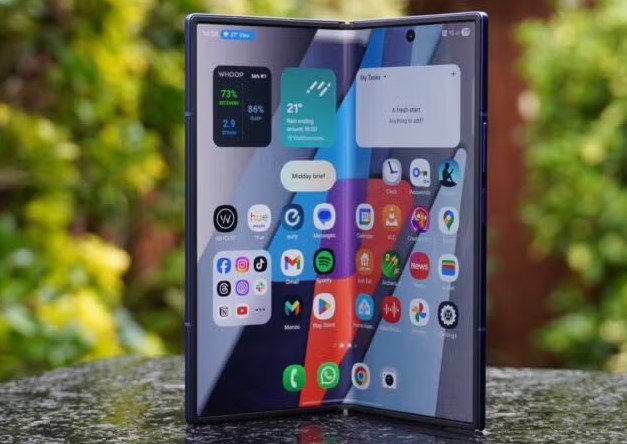Galaxy Z Fold 7’s display endurance puts rivals on notice as Samsung Display sets new benchmark for foldable tech lifespan
Samsung Display just raised the bar — again. The South Korean tech giant announced Tuesday that its latest foldable OLED panel, built for the Galaxy Z Fold 7, has passed a grueling 500,000-fold durability test, a figure that more than doubles its previous standard and cements its lead in the flexible screen game.
Over 13 non-stop days, the panel endured half a million folds at a steady 25°C without showing signs of failure. That’s not just impressive. It’s unprecedented.
What 500,000 Folds Actually Means for You
Let’s break it down.
Most of us fold and unfold a foldable device — what — maybe 50 to 100 times a day? Some power users might go over 200. Either way, Samsung’s new display is designed to last:
-
10+ years for average users (under 100 folds/day).
-
6+ years for heavy users (200+ folds/day).
That’s a far cry from earlier foldables, which were often plagued by screen creases, dead pixels, and hinge fatigue well before the 2-year mark.
Samsung’s test was certified by Bureau Veritas, a global quality assurance agency. That stamp of approval adds credibility to the internal stress test, which took place in tightly controlled lab conditions — but still mimicked real-world use.
Doubling Down on Durability
Until now, Samsung Display’s internal durability rating hovered at 200,000 folds — a standard it stuck to for years, even with improvements to hinge design and screen protection layers.
But the leap to 500,000 wasn’t incremental. It’s a generational jump. According to company insiders, the enhanced performance is the result of multiple breakthroughs:
-
A more elastic Ultra Thin Glass (UTG) layer.
-
Improved hinge mechanics that distribute stress more evenly.
-
New material coatings that resist micro-cracks and dust intrusion.
It’s the kind of behind-the-scenes work most consumers never see but feel every time their screen doesn’t flinch after the 10,000th open.

Galaxy Z Fold 7: Built to Fold Like a Pro
So where’s this wonder screen going?
Right into the Galaxy Z Fold 7, Samsung’s flagship foldable that launched earlier this month. The Z Fold 7 already carries a hefty price tag, but this durability upgrade could make that investment feel a little safer.
First impressions from early reviewers have been largely positive. The crease in the middle is still visible — because physics — but it’s less prominent. And the touch response hasn’t degraded, even after repeated use.
Samsung believes the new panel won’t just extend the life of the device — it’ll extend the appeal of foldables overall.
One Samsung engineer, speaking on background, put it this way: “If people trust the screen, they’ll use it like a normal phone. That’s the goal.”
Why It Matters in a Crowded Market
Foldables are no longer a novelty. They’re a battleground.
Huawei, Motorola, Oppo, and Google have all launched or teased foldable models this year. But Samsung still dominates market share — and it’s this kind of engineering milestone that helps keep rivals chasing.
Foldable shipments globally are projected to reach 28 million units in 2025, up from about 18 million in 2024, according to Counterpoint Research. Samsung accounts for nearly two-thirds of those shipments, though competition is growing fast.
In that context, hitting 500,000 folds isn’t just about bragging rights. It’s about staying ahead in a segment where user trust is still fragile.
What’s Next? Flex Everything
Durability may just be the start.
Samsung Display has hinted at plans to bring the same folding resilience to other categories:
-
Foldable tablets
-
Dual-screen laptops
-
Rollable smartphones
-
Even wearables with bendable displays
The vision? A world where fold doesn’t mean fragile — it means flexible.
For now, though, Samsung’s 500,000-fold feat is the story. It doesn’t promise perfection. But it does mean we’re a lot closer to foldables becoming mainstream — not just in design, but in dependability.
